A few days ago I ranted about Simplicius, a moron who thinks that autonomous drones are about three seconds away from revolutionizing warfare. Needless to say, they aren’t. Tesla can’t actually give us self-driving cars, but apparently it’s time to send easily spoofed neural net AIs into combat zones and give them thousands of pounds of explosives to discharge whenever they feel. Why not just give them nukes while we’re at it?

The comments in response to that piece were largely positive, although some felt that I had downplayed the role of short range quadcopter type drones.
These are fair criticisms, so I will transcribe them below. We start with Poast user Terry.
ok look I fully acknowledge that @theTDC is a smart guy but he’s wrong about quadcopters. Russians use them on the platoon level and if every platoon has one or more guys with a quadcopter that can give them real time info on their surroundings and thats very important.
plus they attach grenades or rifle grenades (20 mm like the M-16 uses) to them. That can ruin your day if the quadcopter guy knows what he is doing.
Also, Doctor Scheckelstein, the Russians train their quadcopter pilots with VR training, they are very serious about this.
Doctor Scheckelstein? I didn’t get my PhD in African basketweaving to have my name butchered like this.
Grooms,
Yeah his point about low battery life of drones isn’t to much of a problem since their mission is short recon flights not to find a target but to confirm their exact position.
The bomb drones aren’t looking for a target but are going to where it is known a target already is.
Both case would involve short 10 to 15 min long flights.The biggest issue of frontline drone is how to power them when their batteries do run out.
Their also the issue of turn around, because charging a battery takes a while. That can be fixed by just having the operator carry around replacement battery packs
It is not difficult to understand the tactical benefit of one of these things, and I have never discounted short range UAVs as serving a small but valid niche.
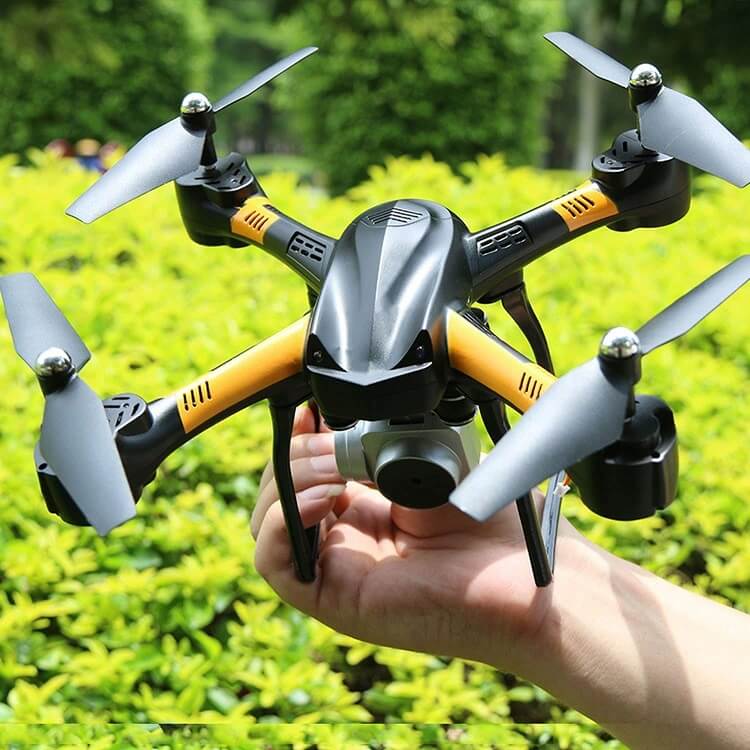
This model is slightly different from what a military would be using, but is close enough.
Unlike most unmanned systems, the opportunity cost in terms of fuel or logistical strain is fairly small with these things. Sure, you have to figure out a way to get batteries around, but those are relatively light when compared to fuel for jet fighters, or one thousand 155mm artillery shells. Even the biggest military versions only weigh around 50 lbs. Add a 20 lbs mortar on the thing, and you’ve used up just 70 lbs worth of supply. This is fairly trivial.
Quadcopters extremely short flight times, especially when carrying weaponry, mean that they are just another form of infantry weapon, but with some niche recon utility in addition. A quadcopter operator is similar to a two man sniper team with a rifle and binoculars. They provide a certain niche value that should not be overlooked, but are niche for a reason. We aren’t about to take away half the infantrymen’s rifles and make them UAV operators anytime soon.
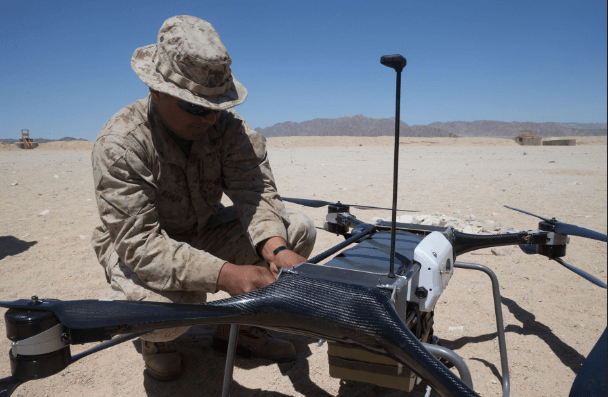
US Military version.
Having a little quadcopter pick up some mortar, fly for five minutes to some apartment building where fighting is going on, wait for someone to poke their heads out, and then either run out of power, or do a kamikaze run on the enemy soldiers or equipment is perfectly fine and dandy. It’s also only providing a small part of the tactical value that traditional armed air recon planes have provided. The quadcopter has extremely limited endurance, and very little ability to find things in the first place, as opposed to watching things that have already been found, such as a firing position.
But more important in the big picture, these short range UAVs have none of the strategic and operational benefits of fixed wing manned aircraft. A traditional CAS plane can find and attack things in conjunction with the ground forces, but can also be used on their own as interdiction. This was done heavily in WW2, Korea, and Vietnam by the USAF, or USAAF that preceeded it, and famously with the “highway of death” in Iraq.
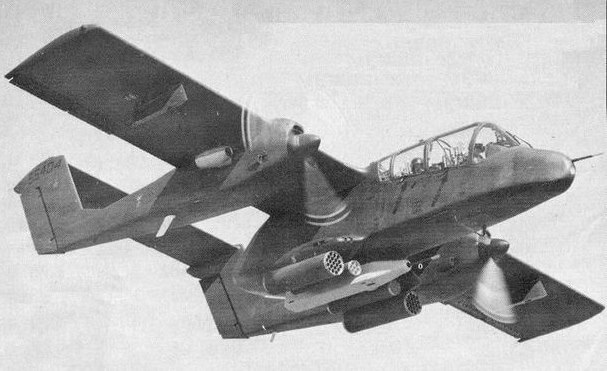
A lot of people hyperfocus on tactics. This is most obvious when people talk about the A-10’s “obsoleteness,” when it comes to destroying tanks. The most extreme version would be claiming that the Warthog was designed to destroy Soviet tanks, but since the Soviets/Russians upped the armour to make the tanks largely immune to the 30mm API rounds, it doesn’t have any valid reason to exist. I’ve actually been quite harsh on the A-10 myself, but only because it’s massively larger than it ought to be, and consumes way too much of our precious fuel.
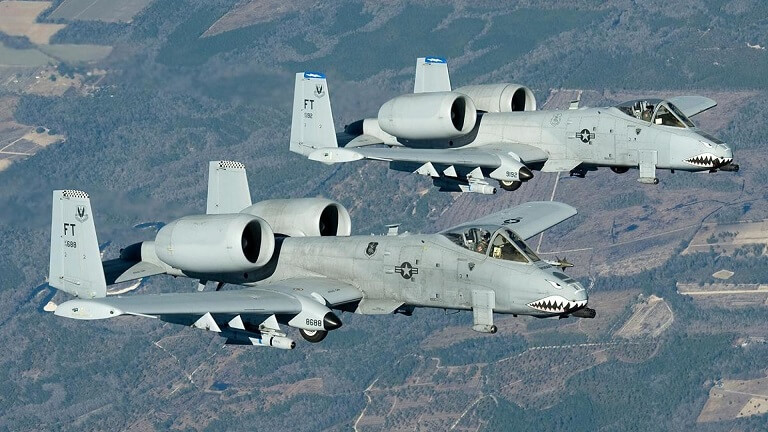
The Warthog was never designed solely to destroy Soviet tanks, as opposed to Soviet tank divisions. Just like the German tank divisions of WW2, these consist of a mixture of different types, not least of which are the fuel tankers, and trucks for artillery resupply. What the pilots of the A-10 were actually supposed to do was fly very low to the ground and underneath the enemy radar, often going hundreds of kilometers past the frontlines to destroy the support vehicles and logistics of the enemy military.
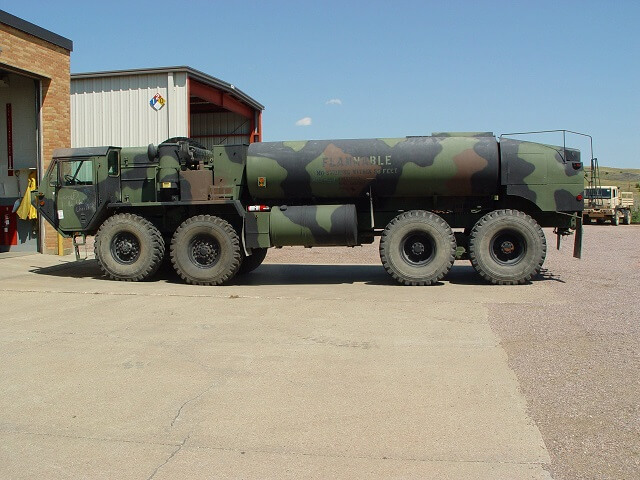
This is why I concluded that the iconic 30mm cannon on the A-10 was a mistake. It makes the plane enormously heavier, more fuel hungry, and harder to supply and service due to the unique ammunition it demands. A vastly smaller plane of somewhere around one tenth the weight can be build, with 50 cals for everything without armour, and dedicated anti-armour missiles for the other cases. But while the cannon on the A-10 is something of an anachronism, the overall mission is not.
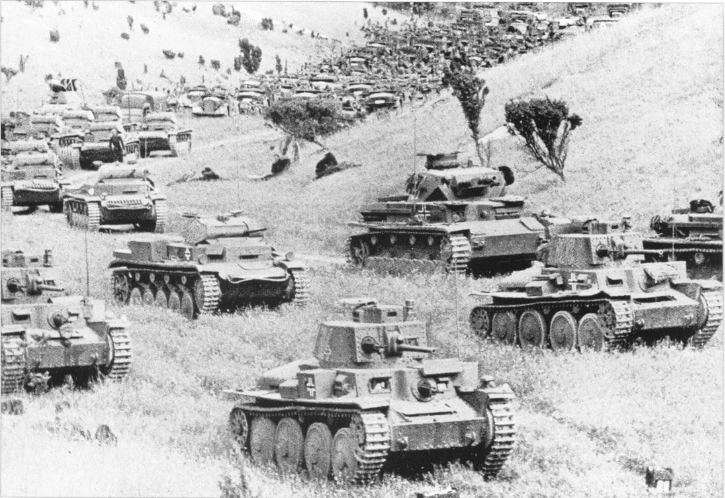
German WW2 tank division. Note all the non-tanks in the background. Also note the vulnerability to dive bombing/rocket strikes.
Watching all the aircraft flying as low to the ground in the Russia-Ukraine war has been grimly satisfying. For years the claim was that all planes must fly at ultra high altitudes, because “muh integrated air defense systems (IADS)” were supposedly so lethal that they simply deleted aircraft beneath a certain altitude. In reality, the opposite is true. The high altitude aircraft are much more vulnerable to sophisticated anti-air defense systems and high altitude missiles.
And here is an explanation of this tactic from the NATO side.
Aircraft have never been as effective against dug in armies, for three reasons. First, it’s a lot harder to find enemy when they’re dispersed and crawling around in miles of trenches.  Or set up under some camouflage netting.
Or set up under some camouflage netting.
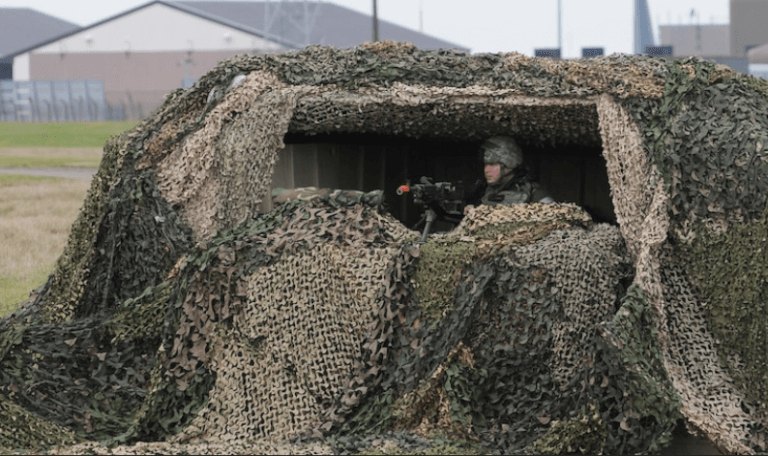
Although this example is more for show.
This partially takes away one of the main benefits of being up in the air, finding things. In contrast, it’s much easier to find armies on the move. It’s impossible to hide a moving truck convoy to the level that we can hide infantry and artillery that are already well set up.

We’ll get back to this later.
Second, the more static the enemy, the less advantageous the operational mobility of the aircraft. A turboprop plane like the OV-10 Bronco has the ability to fly a few hundred kilometers to the right area, patrol around for about two hours, then fly back. The smaller the area they are deployed to becomes, the less this matters, and other weapons, like artillery, tanks, and infantry, are less handicapped as a result.
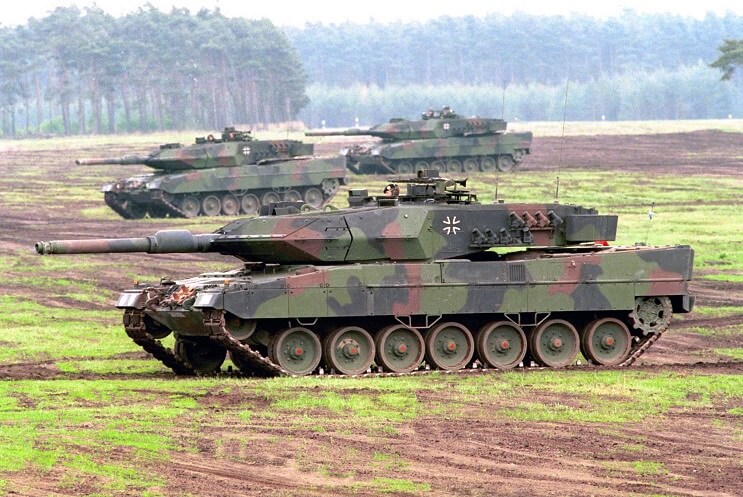
Third, the further from the front, the softer the targets, and vice versa. In dug in areas we can expect better supplied troops, and that includes stockpiles of anti-aircraft weaponry. When doing a raid on a random patch of highway it’s reasonable to find only trucks, and driven by truckers not expecting to be attacked at 8:48 AM on a random Tuesday. When attacking heavily fortified positions on the frontline, it’s more reasonable to expect not just MANPADS, but AAA, and SAMs in case the aircraft fly at higher altitudes, all operated by personnel ready and waiting for enemy aircraft.
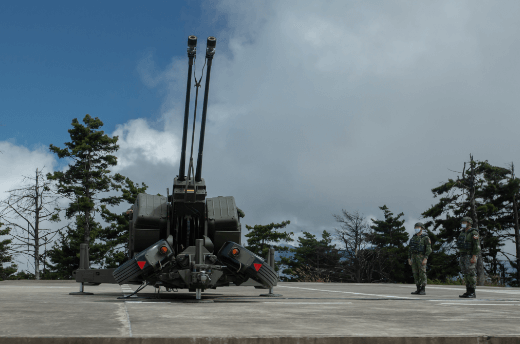
Of course, the presence of anti-aircraft systems does not mean that our aircraft can’t operate. Tanks are vulnerable to anti-tank weaponry, infantry are vulnerable to anti-infantry weapons, artillery can destroyed a number of different ways, etcetera. None of this means that they are useless, only that they must be used together so as to minimize their weaknesses and maximize their strengths. I don’t think anyone is dumb enough to think that tanks can be used in attacks without infantry support, and the same is true for attack aircraft.
Above we see a Russian KA-52 attack helicopter being downed in the first few months of the war. It’s unclear what gets it, but the sound indicates MANPADS or even just bullets. I’ve said what I needed to say about attack helicopters, namely that you shouldn’t use them over fixed wing CAS unless you outright have to, and you definitely shouldn’t use them by themselves. The video claims this one got shot down providing suppressing fire for paratroopers who were being evacuated, which partially explains why it had to operate without much support.
I don’t know what the heli below was doing, but the poor guys don’t look like they made it after what appears to be a MANPADS hit.
There are some missions that are worth doing which are inherently extremely dangerous. Troop evac is definitely one of them. Here is a ten minute long video of Vietnam helicopter pilots sharing some absolutely ridiculous evac stories. Ultimately, the more the guys on the ground need the service, the more dangerous it becomes, but that doesn’t mean you don’t do it.
Even with the operational mobility of our attack aircraft largely irrelevant when fighting in heavily contested areas, they are still comparable to very light flying tanks, with an excellent view of the battle. They are far from useless, because of how chaotic infantry combat actually is.
Below we have a very graphic video. It was taken by Russian forces in Kreminna, about twenty kilometers from Bakhmut. In said video we see the killing of two very confused Ukrainian soldiers. I considered not showing this, but I cannot find a better visual depiction of the confusion of these situations. The soldiers are so disorientated that they don’t even know which side the guy who jumps into their foxhole is on even after he demands they surrender.
The video was found from here, and the description is accurate.
Absolutely insane and graphic first person combat video, a Russian surprises two Ukrainian soldiers in a foxhole who mistake him for a friendly. He calls for their surrender and even tries to physically take their weapons away before firing into them point blank. This happened near Kreminna on the northern front.
Close Air Support on the frontlines like this is inherently dangerous. But so is being an infantryman, so is being a tanker, so is being a nurse. Being in the military is dangerous, and there is no excuse for the almost complete absence of Russian CAS and interdiction.
I hadn’t been following the Russia-Ukraine war all that closely, especially since it ground down into a very slow war of attrition, but it took me a while to realize that I almost never read anything about the Russian Air Force. It’s the dog that never barked, a non-event that speaks volumes. It doesn’t matter whether the source is pro-Zelensky or pro-Russia, almost no one ever mentions the Russian Air Force, because it doesn’t matter. Here is a great piece of analysis, almost 5k words long, that doesn’t even mention airpower at all. You can ctrl+f “air” and all you get are spurious results seen below.

Furthermore, this should never have been a war of attrition anyway. The overwhelming numbers advantage in aircraft should have predestined this conflict to a blitzkreig-esque Battle Of France type victory. Instead it has dragged out for over a year. So what happened?
Before Russia’s invasion of Ukraine, United States intelligence had predicted a blistering assault by Moscow that would quickly mobilise the vast Russian air power that its military assembled in order to dominate Ukraine’s skies.
But the first six days have confounded those expectations and instead seen Moscow act far more delicately with its air power, so much so that US officials cannot exactly explain what is driving Russia’s apparent risk-averse behaviour.
“They’re not necessarily willing to take high risks with their own aircraft and their own pilots,” a senior US defence official told Reuters news agency, speaking on condition of anonymity.

SU-35
It was easy enough to dismiss these claims as yet more Ghost of Kiev bloviation in the early days of the war. Of course they would claim that Russia is displaying some headscratching and idiotic behaviour. They do that constantly, even when everything Russia is doing makes perfect sense. Recently they’ve been pretending that Bakhmut is unimportant, when a casual glance at the map shows it’s an important transport hub.

Yet even as Russian troops were withdrawing in disarray from the Kharkiv region in September and abandoning the city of Kherson in November, the assault on Bakhmut continued unabated.
Which raises the question: why is Russia devoting so much of its military might to capturing a peripheral city?
“It is about money,” said Grabskiy.
He says the Wagner Group was likely assigned the job of capturing Bakhmut by the Kremlin, and doing so will come with a significant financial reward — regardless of the number of Russian lives lost doing it.
…
Before Russia’s invasion, Bakhmut had a population of 70,000 people and was known mostly for its large salt mine and as a transportation hub where several highways intersected.
Gee I wonder why the military might be interested in a transportation hub with great highway access to other parts of the country.
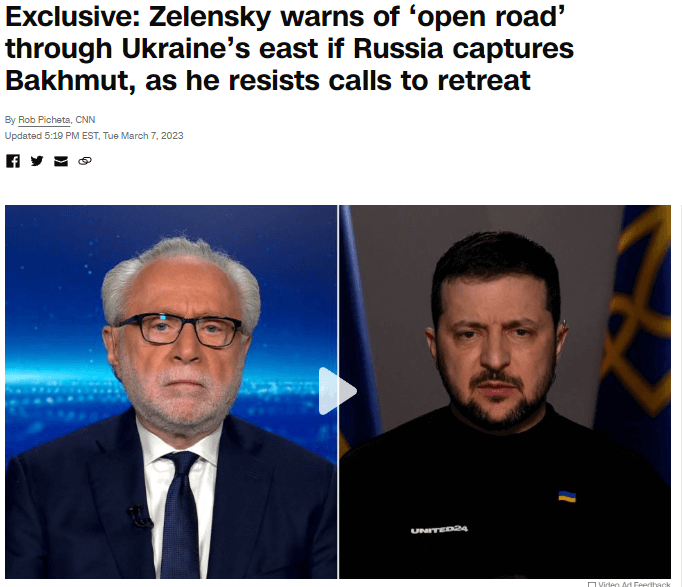
And predictably, as Bakhmut falls, it has now been admitted to be strategically important. If it wasn’t, ZOG wouldn’t have sent so many young men into the meat grinder there to get killed holding “unimportant” ground. Sure, it’s not like they care about White People, but in this case they’re throwing away their pawns for “unimportant” areas.
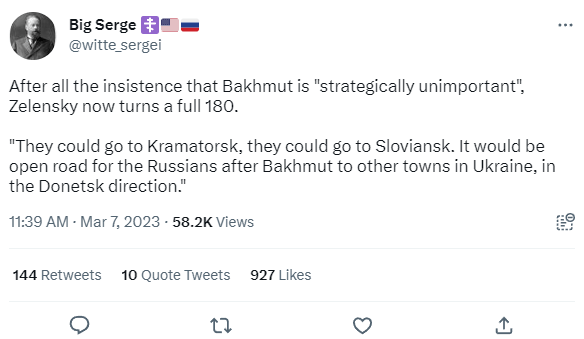
A year later and it’s simply undeniable that Russian Airpower has proven itself to be extraordinarily unimpressive.
Newsweek (February 16th, 2023):
Russia has been reluctant to deploy its airforce over Ukraine since it launched its full-scale invasion of the country almost a year ago, due to the danger of a strike against Russian airfields and the “continued high threat” of Ukrainian air defenses, according to British intelligence.
In its daily intelligence update on the Ukraine War on Thursday, the British Defense Ministry said that the Russian Aerospace Forces (VKS) continue to deploy a similar number of aircraft in the Ukraine war “as they have for many months.”
“Overall, Russian air power continues to significantly underperform in the war, constrained by a continued high threat from Ukrainian air defences and dispersed basing due to the threat of strikes against Russian airfields,” the ministry said.
“Dispersed basing” is a strategy when the aircraft are spread and constantly moving.
“Russian combat jets operate almost exclusively over Russian-held territory, preventing them from carrying out their key strike role effectively,” the ministry added.

What he’s referring to is the air interdiction mission, when you fly a plane two hundred kilometers or so behind enemy lines to go patrol an area and blow up whatever targets they find. The Russians are barely doing this, which is why Ukraine is able to move their troops and supplies towards an away from the frontlines so easily. This should not be possible.
Remember, everybody wants to attack soft targets, be they infantry, artillery, tanks, or planes. The difference is that aircraft, especially fixed wing prop driven aircraft with great endurance, have the unique ability to essentially teleport into the soft unprotected rear of the enemy. That’s where you’ll see the targets that are both easy to find, and easy to destroy.

Above is a picture of the Russian convoy traffic jam from early in the war. At the time I pointed out that this kind of traffic jam was a perfect opportunity for Ukraine to destroy the Russian military, at least in that area. It was 40 kilometers of trucks totally stationary. A few dozen A-10s in the area and you’ve got your own highway of death.
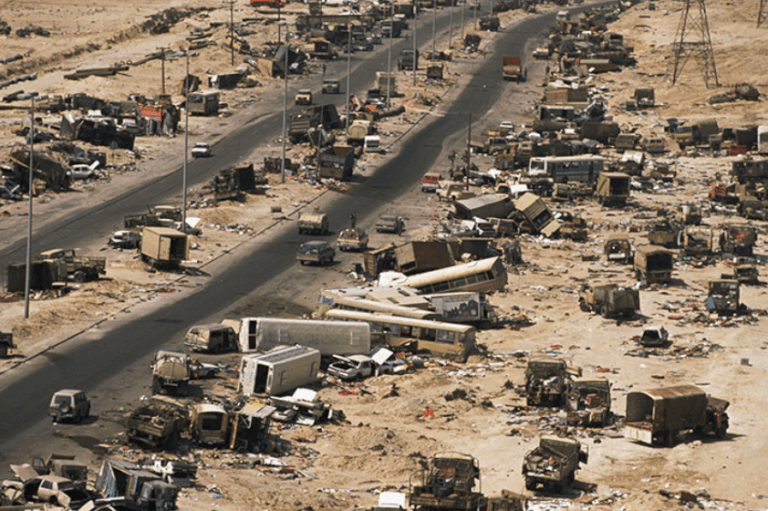
Highway of death
The Ukrainian military does not operate A-10s of course. That they never mustered up any serious attack on the Russian traffic jam showed me how weak they were, although I expected this sort of thing from a military that had ceded air supremacy. Getting Ukrainian artillery within range would have done the trick, but I simply assumed that the Russian Airforce would have interdicted these movements and blown them all up. Some partial confirmation was had when the Reddit Dilation Brigade reported being blown up via airstrike while en route to the dilation stations on the frontline.
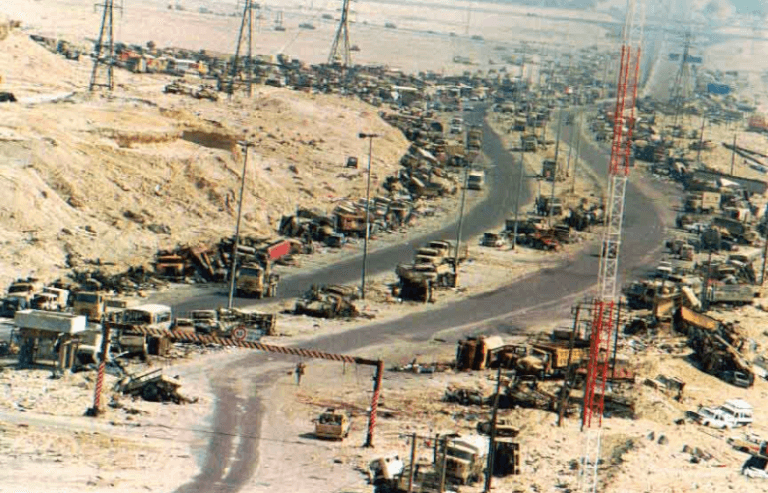
Other angle of highway of death.
Since then it’s been crickets. There were no “highways of death” for Ukraine. I’m sure there has been the occasional minimal strike here or there, but by and large it’s been beyond underwhelming. There are a few reasons for this, one of which could be catastrophic losses. Have they already suffered a few thousand aircraft losses?
“Across Russia, the VKS likely maintains a largely intact fleet of approximately 1,500 crewed military aircraft, despite losing over 130 since the start of the invasion.
No, according to the most optimistic NATO estimations, they have lost 130 aircraft. Even the absurd Gayto dickriders at Oryx put the number at under 300. To put that into perspective, the US lost 65,164 aircraft in WW2.
They also lost over 10,000 aircraft in Vietnam. Sure, this was over more years of fighting, but the total war casualties for the US were just over 200k, with about 60k deaths. There is no doubt that the Russia-Ukraine war has been quite bloody.

Above we see a pro-Russian source estimate that the Russian dead, not just casualties, but dead, at almost 50k. This is close to what America experienced during all of Vietnam, and yet they have roughly 1% the aircraft losses. 3% according to pro-NATO online tabloids. That is not nearly enough aircraft losses.

I know that might seem like odd criticism, that the Russians haven’t lost nearly enough aircraft. But it’s symptomatic of their near total uselessness. They simply have not flown nearly enough sorties, and those sorties have not been effective. The question is, why?
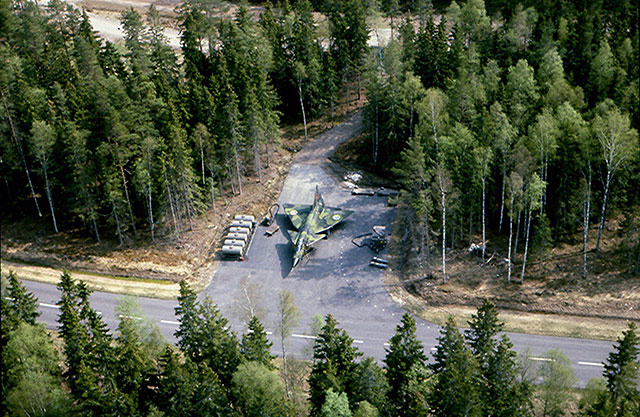
Above is an extreme example of what they mean by “dispersed bases.” It’s the Swedish Bas 60 system. Sweden, fearing attack by nuclear enemies, built up a system of extremely dispersed airbases over the country. Then they made some very cheap blast protection, so that you couldn’t just drop one nuke and take out the entire fleet.

We see an example of this above. Sure, if you hit that exact area with a nuclear warhead the plane is toast, but miss by a few hundred meters and the plane has a good chance of being fine. Spread your planes out over an individual base, and built hundreds of tiny little bases all over the country and you’ve got yourself a very resilient system.

The downside to all of this is that you have more complicated and difficult logistics, serviced by a small army of trucks. The most efficient setup is to build an oil pipeline to a large refinery next to a huge airbase. Then build a fuel pipeline from the refinery to the airbase. This efficient solution has a small downside.

All militaries are strategically limited by fuel, and airplanes are extremely vulnerable to ground destruction. However, not all aircraft are equally weak in both areas. Small STOL planes sip fuel and takeoff in reasonable distances. Helicopters have poor maintenance and fuel demands, but since they can takeoff and land from almost anywhere it’s much easier to have them not get destroyed by long range missiles at the outbreak of the war.
Jet fighters at built up airbases? Not so much.

Ukrainian Mig-29.
Let’s take a look at this fairly well known infographic showing the breakdown of Russian and Ukraine forces.
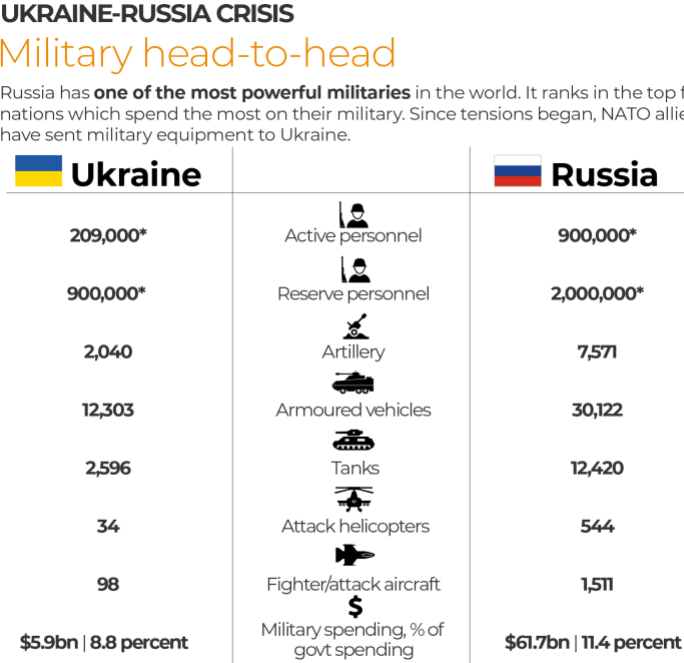
Notice how odd it is that the Fighter/attack aircraft are lumped in together? You should, if you’ve read my piece on how CAS from a fighter is laughable. Jet fighters have horrific endurance and non-existent low speed maneuverability. They can’t easily be staged near the frontlines because their rough field takeoff and landing performance is also non-existent, and they are too expensive to risk exposing to artillery barrages. In exchange for this, they consume tens of thousands of pounds of fuel per mission, which last around an hour, and considerably less if they’re using their afterburners.
Then we have cutiepies like this, the Zenith STOL 701, which can takeoff and land almost like a helicopter, costs about $20,000 to build, and takes a touch over 100 lbs of fuel after a nice five hours of flight.
I said before that jet fighters have two roles, air superiority, and naval recon and strike. This is because their high speeds and maneuverability against incoming missiles serve them very well when finding and destroying aircraft carriers on the open ocean.
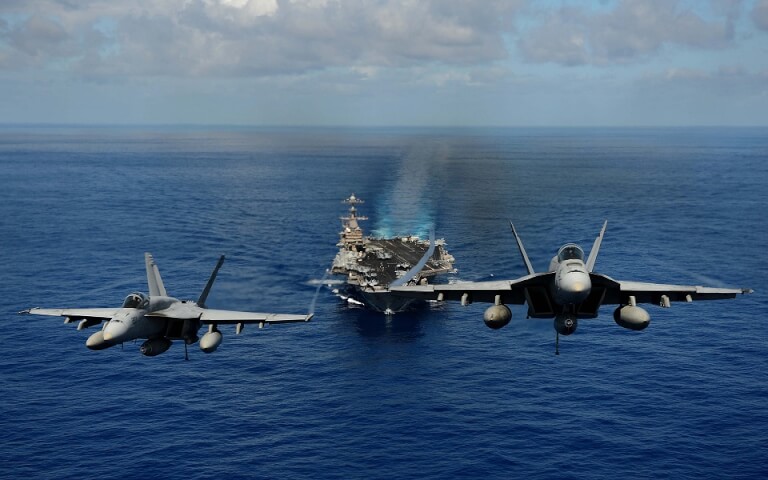
If you find the carrier, you’ve got to fight the planes onboard anyway.
This is a very different task than tediously peering down at miles of hidden trenches and other camouflaged areas trying to find enemy infantry.

Somewhere in the middle we have finding and destroying individual trucks, or small convoys when doing interdiction.
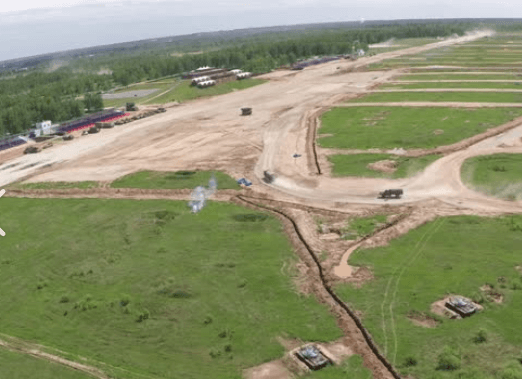
Question, did you spot the two tanks at the bottom of the image?
But if your plane is flying well behind enemy lines, you can’t just radio that you’ve found something. There is nothing to destroy it with other than you and your wingman. So you need to find, identify, and destroy them. Flying by at 700 kmph complicates this, to say the least.
And you can’t just fly higher to get a better picture of the area, since then you’ll show up on radar and get one of these shot at you.
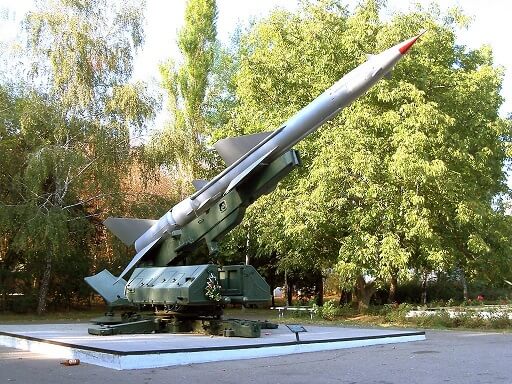
It is an open question as to whether or not jet fighters can even do interdiction. What is not up for debate is their atrocious fuel consumption. That 20,000 lbs figure I used was based on an average of Western fighters. Some, like the F-22, are bigger. Others, like the Gripen, are smaller. But the Russian jet fighters are universally massive.

Here’s the SU-35 again. A pretty plane no doubt, but one that weighs over 40,000 lbs when empty, and can carry over 25,000 lbs of internal fuel. Add on drop tanks and you could be looking at 40,000 lbs of fuel per mission. So it flies to the frontlines from way back at a pristine airbase, drops some bombs, and flies back. Now you have to come up with 40,000 lbs more fuel.

Above is the Mig-29, used by both Russia and Ukraine. It weighs about 25k lbs while empty, and has internal fuel capacity of just 7,7k lbs. That’s not a good thing. It means it has terrible range because they didn’t put enough fuel in the thing. It’s the Soviet’s answer to the F-16, a plane so underfueled some countries grafted conformal fuel tanks on the thing.

Range figures that you see on the internet for these planes are extremely optimistic. They assume that the planes are flying completely clean, and at high altitudes, something that is never true in actual combat, or at least this war in particular. In some cases they even include range with drop tanks added. You can easily cut the combat range numbers in half when flying at the deck.
Russia is having extreme difficulties staging their planes from anywhere near the frontlines, especially in numbers, so it’s a challenge for the planes to fly to the combat area, drop bombs, and then fly back. It would be impossible for them to continue past for hundreds more kilometers and then patrol the area for targets for hours. They simply do not have the fuel endurance for that.
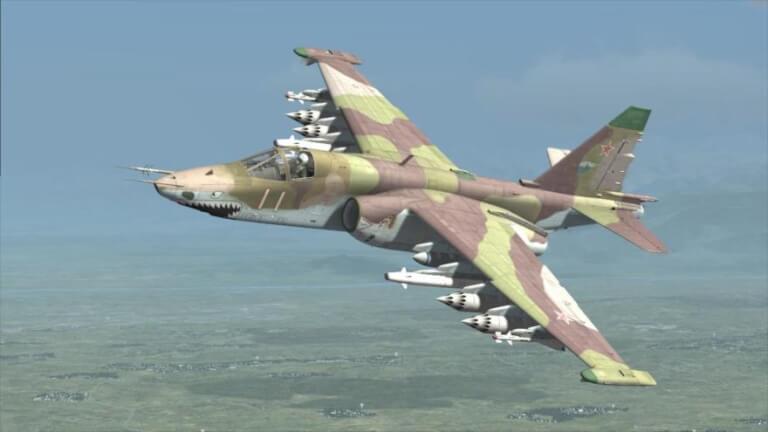
SU-25
You might be thinking that the SU-25 could turn the tides. Think again. This might be the dumbest plane that Russia/Soviet Union ever produced. It’s a CAS plane that has turbojet engines.

I’ve said before, but piston prop engines are around 6 times more fuel efficient than turbojets. Turboprops are about 4-5x more efficient. There is absolutely no reason to put turbojets on a plane that is not flying supersonically. All it does is make the plane massively more fuel hungry for little in exchange. As a result of this, it has even worse range than the real fighters, without having any ability to contest the airspace from other jets.
As if that wasn’t bad enough, the geniuses who designed it decided to go for partially swept back wings, so that it could hit an almost 1,000 km/h cruise speed. Then they reduced the rearward cockpit visibility so as to streamline the plane.
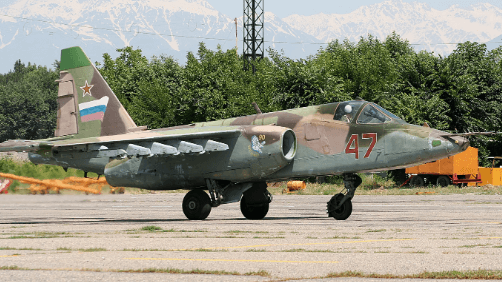
Because who needs rearward visibility in a plane that’s designed to turn and attack on a complicated battlefield? What we really need out of our CAS plane is the ability to almost go supersonic while staying in the combat area for about five minutes and having terrible visibility.

It’s like the Russians looked at the A-10, and decided that they wanted an armoured CAS plane as well. They wanted the 30mm cannon, and the titanium bathtub. Only, they wanted it on the world’s shittiest jet fighter.
Relatively low takeoff and landing speeds? Unimportant. Low speed maneuverability? Overrated. Fly by wire backup? Irrelevant. Semi-retractable landing gear which makes emergency landings more viable? Unnecessary.
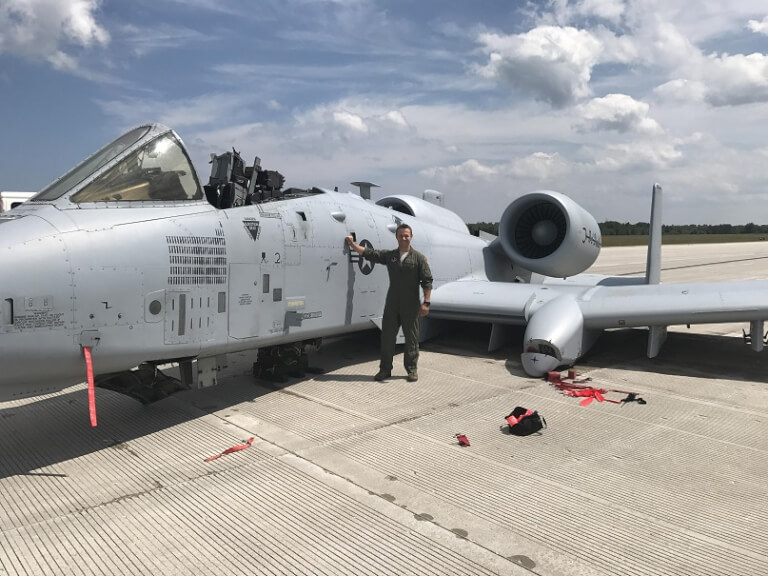
The SU-25 consumes hideous amounts of fuel. It has terrible endurance. It has high takeoff and landing speeds (which is bad), and there is no evidence that it can be staged from rough fields. It is forced to be staged from pristine fields well away from the frontlines and right next to the real jet fighters. It can’t fly slow enough to identify targets. In short, it’s just a crappy jet fighter, with all the problems of a real jet fighters, and none of the upside. And no, it can’t do naval strike either, or at least it would be better at it if they deleted the heavy armour.
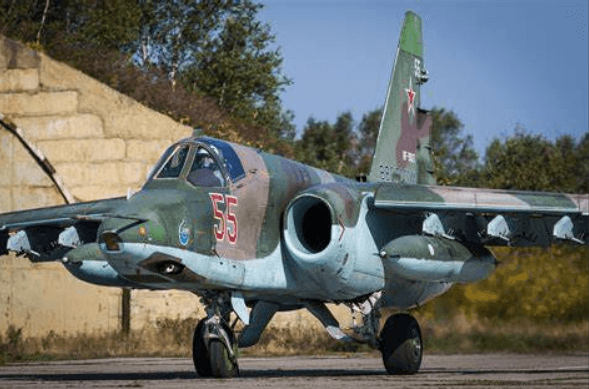
****ing turbojet engines. What moron decided that?
It’s easy to understand why Russian Airpower has been such a non-factor in this war. They simply do not have the right kind of planes to exploit the air supremacy advantage that they have created. If you don’t have any troop transport helicopters, then you can’t make use of the opportunities for heli transport. And if you don’t have any real CAS and interdiction planes, then you can’t do CAS or air interdiction.

Above is the OV-10 Bronco. I pointed out that it’s a few thousand pounds overweight, and is far from my ideal craft. But even taking it as is, the Bronco has about 1,500 lbs of internal fuel for a bit over 4 hours of endurance. Add on a centreline tank with another 1,000 lbs and you’ve got yourself seven hours of endurance.
Jet fighters typically have time on station of around 20 minutes, tops. For the 25,000 lbs of internal fuel that a jet fighter takes to fly to an area, drop bombs, and fly back – more for the larger ones – we get 70 plane-hours of Bronco’s patrolling overhead.
You can stage these things from just about anywhere because they have low takeoff and landing speeds, extremely rugged landing gear, and were designed to be maintainable with hand tools. And of course, they’re relatively cheap, which means that it’s not such a big deal if they get struck by artillery, or otherwise destroyed. Finally, it’s a lot easier to come up with 2,500 lbs of fuel every 8 hours to keep them flying, as opposed to ten times that for the jet fighters every two hours. And the Bronco is almost three times larger than what I proposed.
As a result of all of this, you can scatter them over fields just barely outside the roughly 30 km from the front you need for spacing from enemy artillery fire. Wikipedia says these things can cruise at 460 km/h. Marshal Harrison, a Vietnam OV-10 veteran and author of “A Lonely Kind of War: Forward Air Controller, Vietnam,” claims he could never get the things past about 330 km/h. Even with a speed of 300 km/h, you’re reaching the front in just six minutes. After that you’ve got six hours of fuel left to patrol whatever roads and hills and valleys you feel like, looking for whatever juicy targets pleases you.

You don’t need to use the OV-10 Bronco. I just picked that as it’s the plane I’m most familiar with. Below we see the US A-1 Skyraider. This is also fine.

And finally we have the IA-58 Pucara, another real CAS plane. This would do the trick.
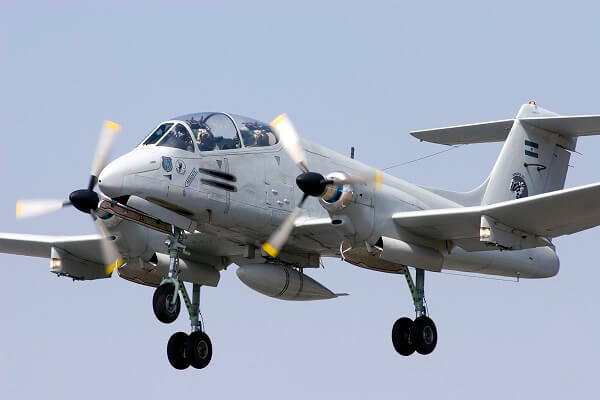
Notice how all of these planes have propellers? It’s almost like planes that are designed for slower flight performance and high endurance shouldn’t have fuel inefficient engines whose only purpose is to help you break the speed of sound.
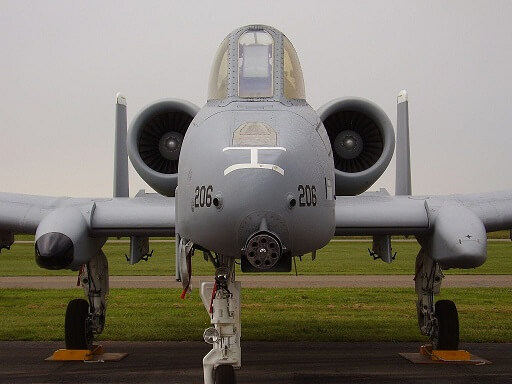
Yes, the A-10 has medium bypass turbofans, I am aware. That’s still far better than turbojets.
If you don’t have planes with good endurance, good low speed maneuverability, and the ability to be staged close to the action, you simply can’t do this.

There have been ample opportunities to do this in the Russia-Ukraine war. Hell, the Ukrainians could have done this to the Russians many times over, if they had the hardware. It’s not like the Russians have overwhelming numbers of air superiority fighters in the area anyway, so it’s free real estate.

Right on schedule, here’s a twatter post by Russians With Attitude, claiming that some Ukrainian convoys are coming under fire while leaving Bakhmut. You might think that he’s referring to air strikes, but you’d be wrong. I’ve never seen a war where airpower is this totally irrelevant.

It really is almost comical. I searched for “air” on their telegram channel and got the following.
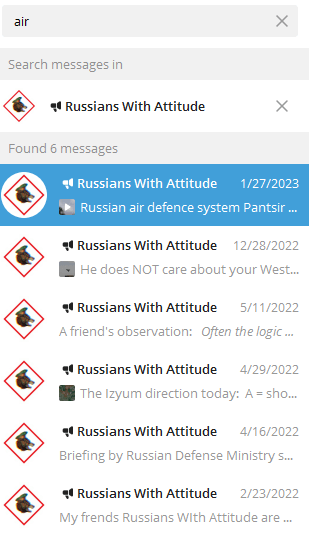
Six mentions of “air” in more than a years worth of war. Three of them are about anti-air systems, and one of them is about a Ukrainian airbase being missile striked. It’s like the Russians forgot that aircraft existed, except maybe troop transport helis.

A Chinook, but the point remains.
I don’t think I’m getting across to you all just how baffling and terrible the Russian Air Force performance has been in this war. No one even bothers pointing it out because they are so irrelevant. They went through the trouble of bombing Ukrainian airbases and building a bunch of air supremacy fighters. This allowed them to do… absolutely nothing of consequence.
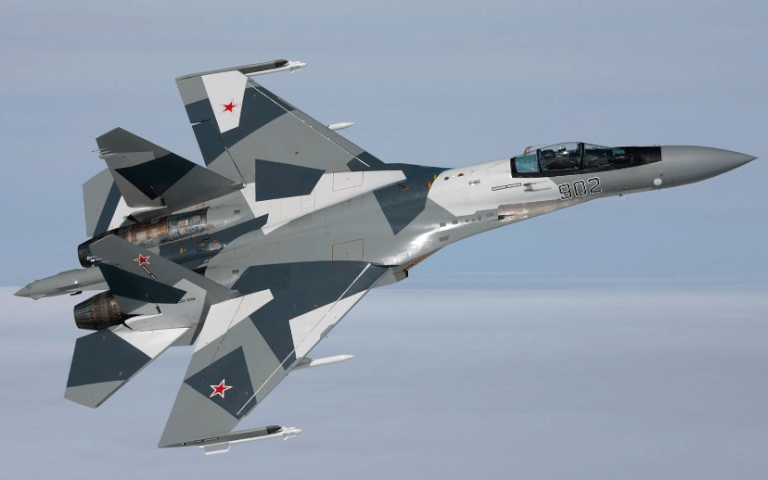
And at this point, there isn’t anything that they can do. Their generals are using their aircraft wisely. They cannot stage their fighters closer to the front, since they need so much fuel and pristine runways to fly out of. They simply never built any planes that can actually do interdiction and CAS, and their troops are now paying the price.
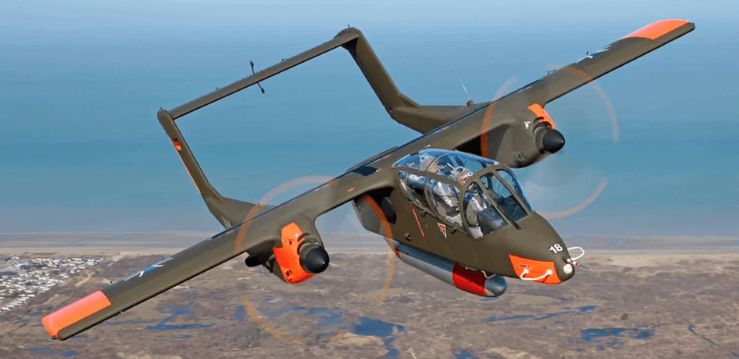
Russia is a famously corrupt country, and I believe their Military Industrial Complex has the same attitude towards the kind of dirt cheap planes that are required that ours does. You can’t make obscene profits off them, so why bother? As a result you get an Air Force that sulks on the sidelines while the real men do the fighting, even if they have to use horribly fragile vehicles to do it in.
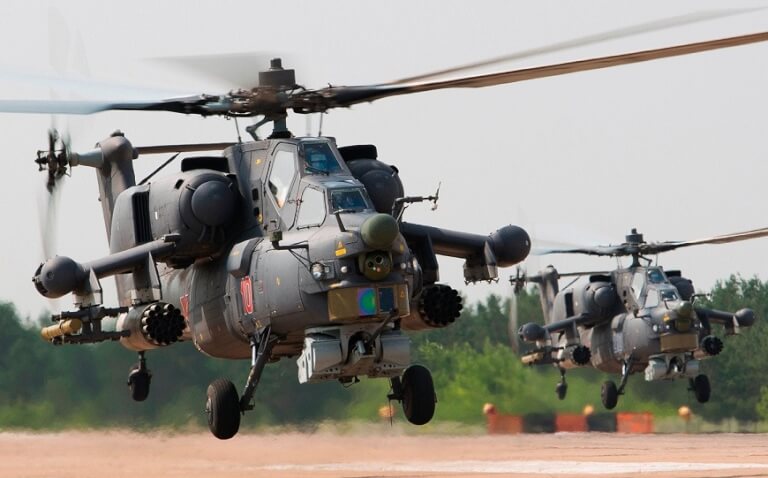
The Russian total airpower whimper has singlehandedly prolonged this war for long after it should have been wrapped up. There was no reason for this not to be Battle of France, 1941 all over again, except the German WW2 army got better CAS from Stukas than the Russians do from their jet princesses.
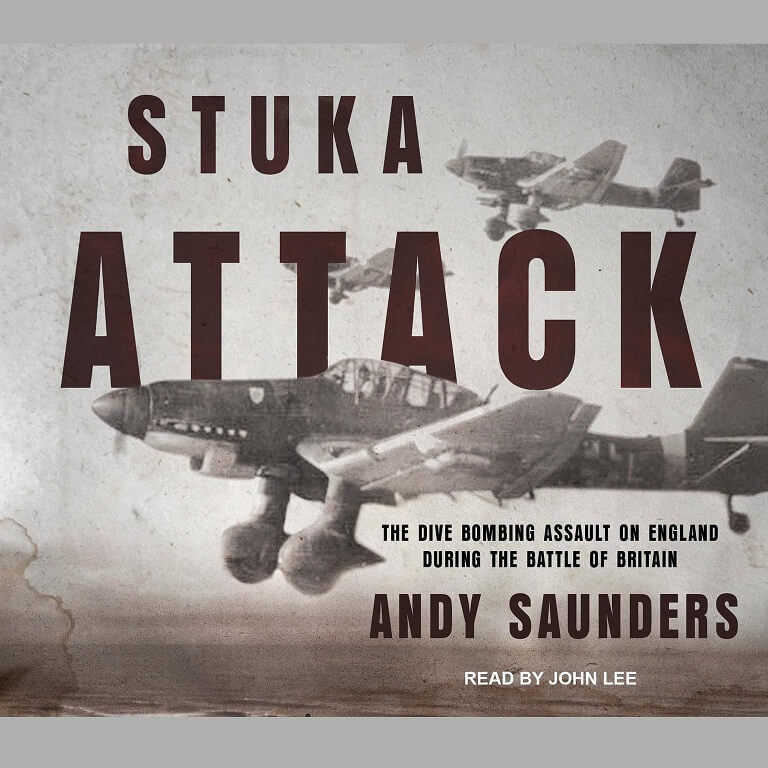
Instead the war has turned into a meatgrinder because the Russian Oligarchs were more interested in building the SU-57 fake stealth shitmobile instead of mass producing ten thousand piston prop airplanes. Hell, even the Super Tocano would be an improvement on what they have, and it doesn’t really have any valid role in a military.
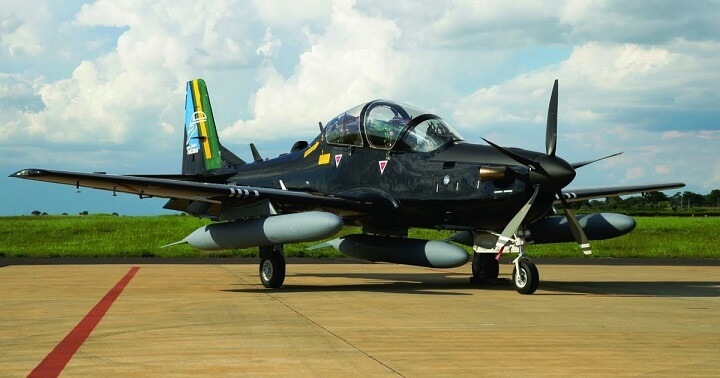
Deezgusting.
UPDATE: The above piece got quite long, but I failed to bring up an important point, which is that the Russian Air Force is also tiny. Let’s bring up that graphic again.

The Russians have around 2,000 fighters and attack helicopters. They have a bit under 4,000 active aircraft of all types. In WW2, they had over 36,000 of these things.
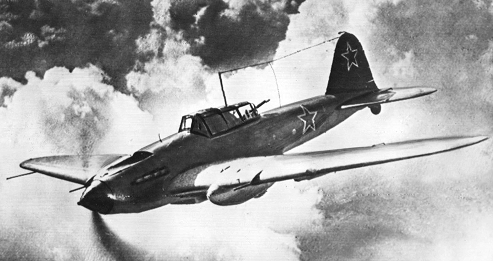
Sturmovik attack plane.
Not 36k aircraft, just 36k of the IL-2 Sturmovik ground attack planes. The Soviets lost over 106,000 aircraft, some Lend-Lease, and produced over 157,000 on their own. The major powers produced almost a million aircraft in total.

All modern air forces have undergone an extreme shrinking process since WW2, but nowhere is this more apparent than Russia. The US Military has over 14k aircraft, and while the USAF hates the ground recon and attack role as much as any other Air Force, even they have the A-10,

The AC-130,
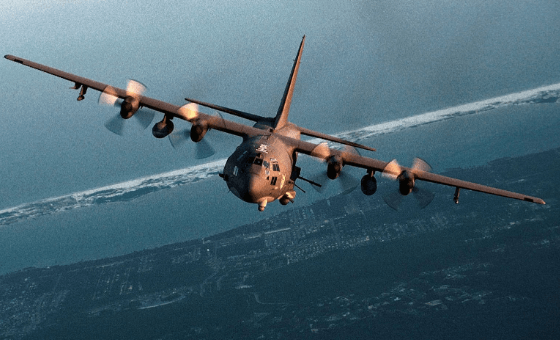
The A-29,
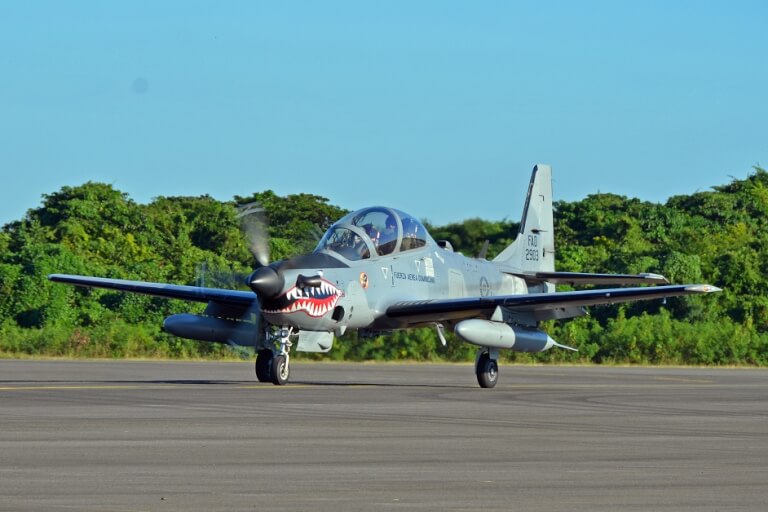
And the upcoming AT-802.
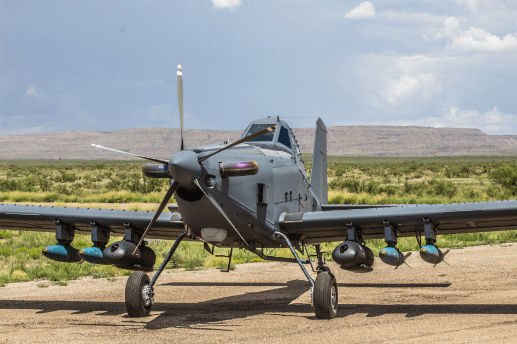
None of these planes are even close to ideal, and I think the AC-130 has zero business flying over even mildly contested airspace. Even it has great endurance and firepower, and all the others are far better than the turbojet driven SU-25 garbagemobile in terms of endurance, low speed maneuverability, and rough field performance. Even more important, they consume enormously smaller quantities of strategically precious fuel, especially the A-29 and AT-802.

SU-25
The Russians had better CAS and interdiction capability back in WW2, due to their plethora of relatively fuel inexpensive IL-2 ground attack planes which were rugged enough to actually be used in real wars. Our militaries have massively backslid on CAS. The Russian Military Industrial Complex has simply deleted theirs.

But I guess Russia just doesn’t have the manufacturing capability to crank out a thousand duel engine armoured piston props that weigh under 10,000 lbs and can actually do CAS and interdiction. They could churn out 40k planes per year in 1944, but manufacturing technology has progressed backwards for some reason. They’ve been forced to, by the ironclad laws of the universe, have a tiny air fleet of fuel guzzling jet princesses that needs to sit on the sidelines doing nothing while their infantry takes huge casualties in the bloodiest war involving a Western Power since Vietnam.

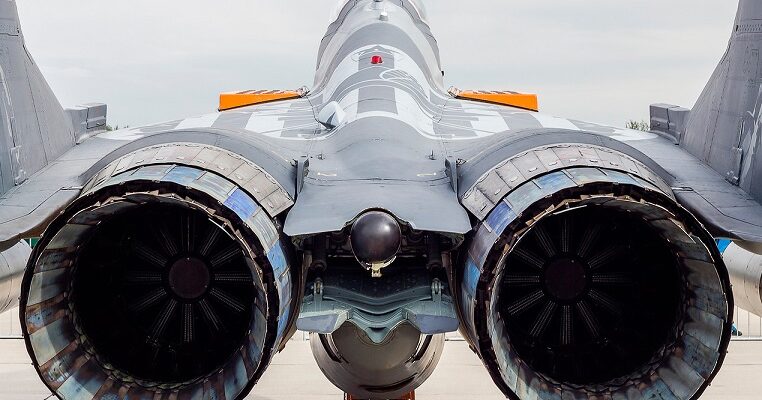




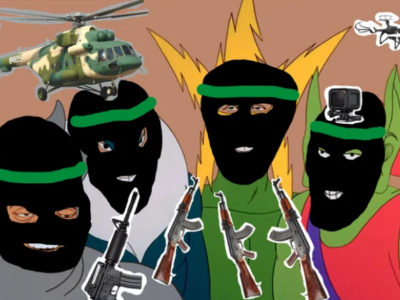


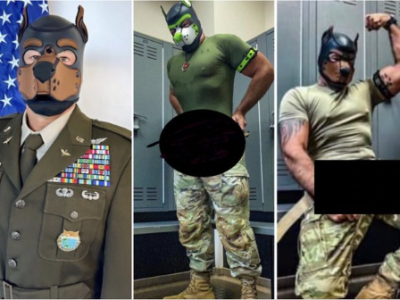






You’re mostly right but how dare you criticize Russia!
Russia is perfect and the retarded ass Putin shills will never forgive you.
Russia is going to win this war any year now, just you wait and see. Mostly wait.
By the way, this paragraph had me laughing because you are absolutely correct.
“It’s like the Russians looked at the A-10, and decided that they wanted an armoured CAS plane as well. They wanted the 30mm cannon, and the titanium bathtub. Only, they wanted it on the world’s shittiest jet fighter.”
Russia copies stuff all the time and it is always an disfigured abortion that results because they’re not smart enough to either copy it correctly or copy some of it and engineer the rest correctly. They tried copying the French Concorde jet and failed too hahaha.
ukraine is trash but these Putin shills make me hate Russia too, especially since Putin loves kikes and fires people for mildly criticizing chabad lubovitch. Also, Wagner group is owned by a kike too.
Their airpower failure here is astonishing. The USAF tries their hardest to throw away any air superiority advantage with their absurd 15,000+k altitude restrictions. But at least they’ve got their AC-130 and A-10 to do real CAS when it’s required. They also have the A-29, their Tocano, and the Air Tractor. All of these planes have more interdiction and CAS capability than the entire Russian fleet.
Sometimes you’ve just got to wonder what the thought process is.
The bad thing is that I’ve heard the USAF is trying to get rid of the A-10. I’ve heard the 30mm up close and can’t imagine how scary it would be to be on the receiving end of that plane.
I’ve always liked how you’re objective about things and I can’t understand how the Putin shills can’t admit when Russia is screwing up. They remind me of the “4-D Chess” trump fools who kept making excuses for him. The guys who cheer on the footage of war crimes makes me sick too. I can’t stand seeing either side get tortured or shot needlessly and some times these sickos accidentally cheered it on only to find out that the Russians they thought were torturing the ukrainians were actually ukrainians torturing Russians. Both side have done sick stuff to what is essentially their genetic brothers and I hate to see it.
The fact that Russia has failed so hard with their air force and other areas makes me think that they’re either super incompetent or they just don’t care about losing good Russian men in this stalemate mess.
At this point I wonder if Russia would be doing any better if we hadn’t been sending mercenaries and NATO weapons to them.
At this point I think they’d be better off to keep what ground they’ve gained and call a truce instead of sending more warm bodies to die for marginal gains.
It’s hilarious how a lone blogger makes more sense of a military situation than all the highly paid anus-loving butt pirates at the CBC. It makes me wonder if anyone anywhere in government knows what is going on.
Oh, and happy wahmen’s (what is a wahmen?) day.
>since they need so much fuel and pristine runways to fly out of.
And where exactly did you that idea pull from?
No dispute on the fuel consumption, but “pristine runways”?
Every Cold War era pilot operated under the assumption that you wouldn’t return to base, because there would be no base anymore…just the little inconveniences of nuclear war.
Even freaking passenger jets can take off and land on sand, if need be: https://en.wikipedia.org/wiki/Lufthansa_Flight_181#Aden
Something they were definitely not designed to do.
Besides, how much loitering time do you need to find and blow up a freaking bridge?
They tend to remain in the same place, unless the pilot had too much vodka.
The fact that any bridges across the Dniepr are still standing tells me the available aircraft aren’t the underlying problem here.
They’re probably paranoid about expending aircraft at a rate they may not be able to replace in the short term. They may still need them, in full capacity.
After all, Biden may still decide that our judeo-christian values are best served by giving the Kike of Kiev a couple hunded billion dollars worth of aircraft.
You don’t need any loitering time to blow up a bridge. You don’t need a plane at all. Just fire a missile at the bridge, assuming that conventional explosives will work at all.
And they’re right to be paranoid about losing almost 10% of their fleet. That’s why it’s absolutely pathetic that they have such a small fleet to begin with, and don’t have any prop driven real CAS planes. If you destroy 90% of your fleet before the war begins, then you have less planes. Simple as.
And as for the rough field takeoff performance, the Russian planes are apparently designed to takeoff and land from moderately rough fields, but they still need huge amounts of fuel per flight, and that takes infrastructure. That could be accomplished through building up stores ahead of time, but there is no evidence that Russia is doing this.
Exactly! People keep telling me that Russia isn’t running low on supplies but their actions show otherwise.
And ferp, remember that both sides of this (just like nearly every other war in memorable history) are controlled by jews.
Wagner group is owned by a jew:
https://www.timesofisrael.com/mercenary-linked-putin-ally-lashes-dying-out-western-civilization/
And Putin loves chabad lubovitch:
https://www.timesofisrael.com/putin-fires-top-official-who-describes-chabad-as-a-supremacist-cult/